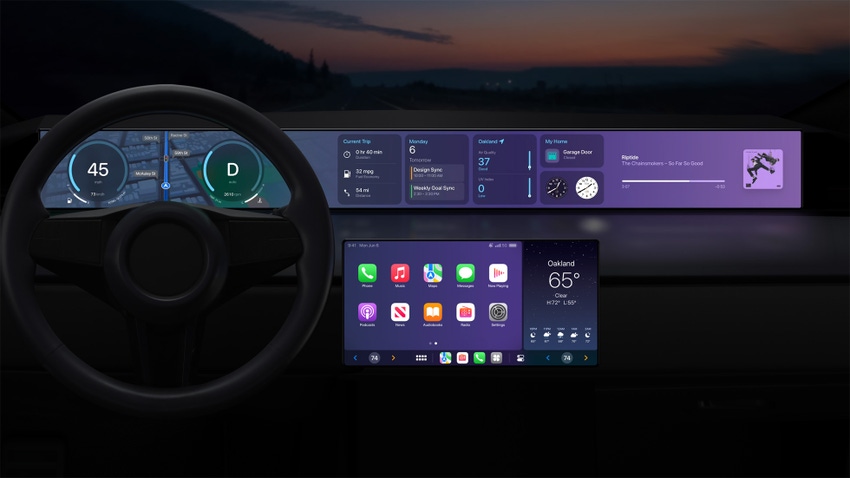Apple, Google and Amazon will soon be among the media giants livening up dull car journeys with in-car entertainment services.
October 12, 2022

Apple, Google and Amazon will soon be among the media giants livening up dull car journeys with in-car entertainment services.
A new forecast published by analyst firm Omdia this week predicts the number of connected cars on the road will reach 571 million by 2025, compared to 231 million last year. According to Omdia, it represents something of a tipping point because at that scale, it becomes comparable to the TV set-top-box market.
The pace of growth will accelerate further as connected cars become the norm. ABI Research predicted in April that 70 percent of new vehicles sold in 2028 will be connected cars. Meanwhile, Transforma Research said in June that the number of connected vehicles on the road will reach 2.5 billion in 2030.
“These vehicles provide the next battlefield for the likes of Apple, Google and Amazon,” said Daniel Sutton, principal analyst at Omdia, in a statement on Tuesday. “These companies have fought over the consumer’s home for the last decade and that is now expanding into automotive.”
These three tech giants are each trying to wrest control of the in-car media experience from the auto makers themselves. Apple recently showed off CarPlay 2 OS, which promises much deeper integration between a vehicle’s functions – like climate control and speedometers – in addition to infotainment.
Similarly, Google is ramping up its in-car presence with Android Automotive, which unlike Android Auto, doesn’t require a smartphone connected to a vehicle’s infotainment system in order to work. Meanwhile, Amazon, with its Fire TV for Auto, wants to enable Prime customers to access their content library from their car.
Today, all this effort looks like overkill, given that the majority of cars typically have just the one fairly modest-sized screen in the front centre console, while a minority have an additional digital instrument cluster. The opportunities for watching videos are generally limited to motorway service areas, really bad traffic jams and, increasingly, charging.
This is set to change though, as more connected cars ship with a greater number of screens, including separate displays for both front and rear passengers. At this point, mid-journey video-consumption becomes a no-brainer.
“The media opportunity will arrive quickly in cars to the benefit of telcos, media companies and advertising partners thanks to location-driven services,” predicted Omdia principal analyst David Tett.
While some auto makers will partner with the likes of Apple and so-on for all of their future in-car entertainment needs, others aren’t quite ready to give up control over what is becoming an increasingly important element of the customer experience.
Just this week, for example, BMW announced it will bring casual gaming to its infotainment systems next year. It has partnered with AirConsole, a start-up backed by BMW’s own incubator programme Garage, which offers a gaming platform compatible with the German car giant’s curved displays. The games will run entirely on the car’s own infotainment system, and players can use their smartphone as a controller.
“New partnerships are being announced on a regular basis and there is scope for companies across the value chain to still seek and sign partnerships, but there is a hesitancy from some automotive brands to give up control of the valuable in-car media experience,” said Sutton. “Early-mover advantage could well be key here, so potential partners need to engage quickly or risk losing out on a big opportunity.”
Get the latest news straight to your inbox. Register for the Telecoms.com newsletter here.
Read more about:
OmdiaAbout the Author(s)
You May Also Like








.png?width=300&auto=webp&quality=80&disable=upscale)


_1.jpg?width=300&auto=webp&quality=80&disable=upscale)


.png?width=800&auto=webp&quality=80&disable=upscale)